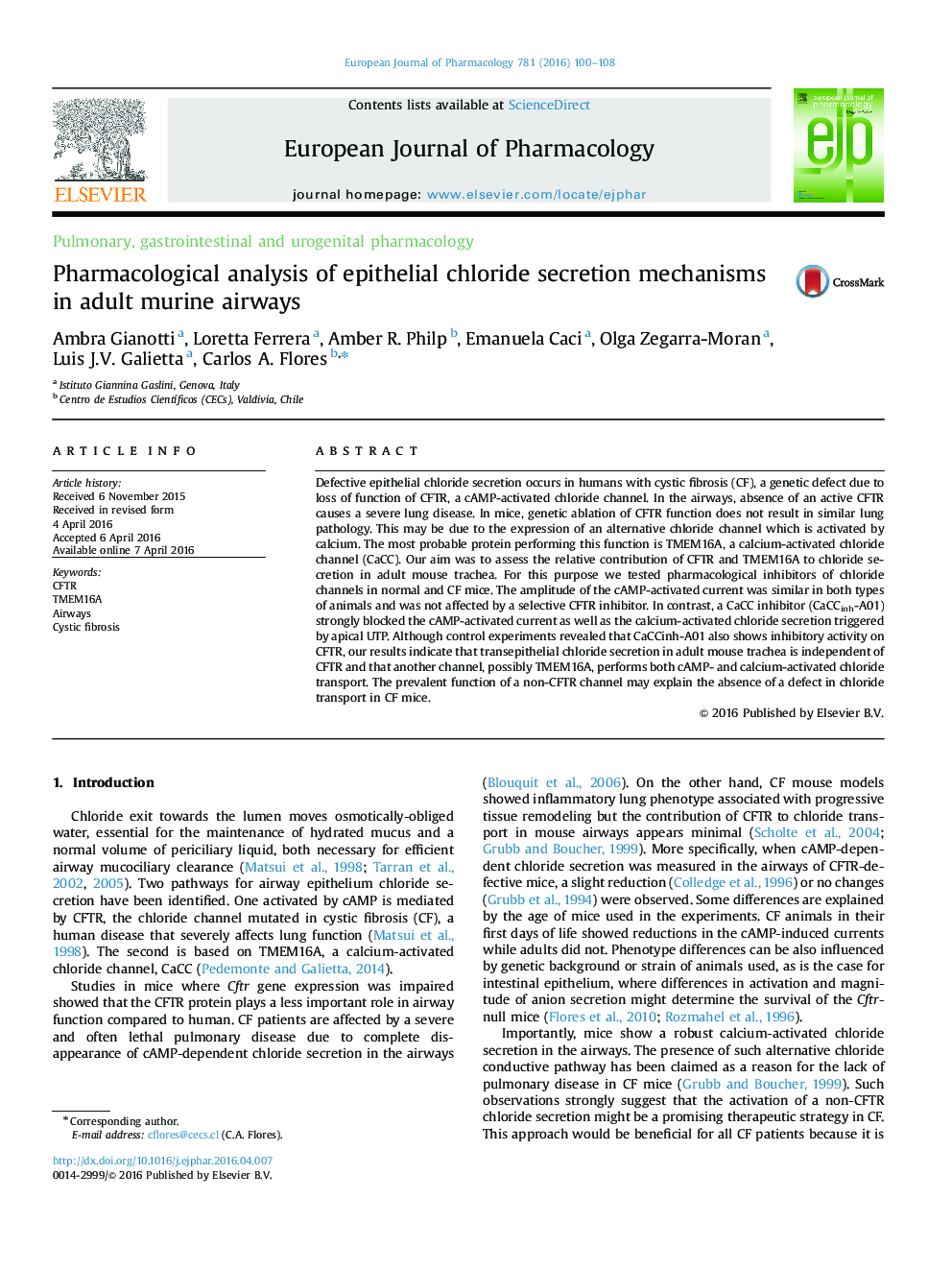| Article ID | Journal | Published Year | Pages | File Type |
|---|---|---|---|---|
| 2530974 | European Journal of Pharmacology | 2016 | 9 Pages |
Defective epithelial chloride secretion occurs in humans with cystic fibrosis (CF), a genetic defect due to loss of function of CFTR, a cAMP-activated chloride channel. In the airways, absence of an active CFTR causes a severe lung disease. In mice, genetic ablation of CFTR function does not result in similar lung pathology. This may be due to the expression of an alternative chloride channel which is activated by calcium. The most probable protein performing this function is TMEM16A, a calcium-activated chloride channel (CaCC). Our aim was to assess the relative contribution of CFTR and TMEM16A to chloride secretion in adult mouse trachea. For this purpose we tested pharmacological inhibitors of chloride channels in normal and CF mice. The amplitude of the cAMP-activated current was similar in both types of animals and was not affected by a selective CFTR inhibitor. In contrast, a CaCC inhibitor (CaCCinh-A01) strongly blocked the cAMP-activated current as well as the calcium-activated chloride secretion triggered by apical UTP. Although control experiments revealed that CaCCinh-A01 also shows inhibitory activity on CFTR, our results indicate that transepithelial chloride secretion in adult mouse trachea is independent of CFTR and that another channel, possibly TMEM16A, performs both cAMP- and calcium-activated chloride transport. The prevalent function of a non-CFTR channel may explain the absence of a defect in chloride transport in CF mice.
